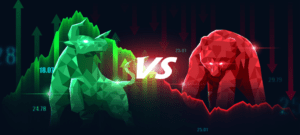Candlestick patterns have been widely used by traders and investors to analyze price movements in the share market. These visual representations provide valuable insights into market sentiment, trend reversals, and potential trading opportunities. In this blog post, we will delve into the world of candlestick patterns and explore how they can be utilized to make informed decisions in the share market.
Understanding Candlestick Patterns:
Candlestick patterns consist of four main components: the open, close, high, and low prices. The body of the candle represents the price range between the open and close, while the wicks or shadows represent the high and low prices. The length and shape of the body and wicks can provide crucial information about the strength and direction of price movements.
Bullish Candlestick Patterns: Hammer: A hammer candlestick pattern occurs when the price opens near its low, rallies significantly during the session, and closes near the opening price. The long lower wick indicates that buyers stepped in to push the price higher, suggesting a potential trend reversal from bearish to bullish.
Bullish engulfing pattern: This pattern forms when a small bearish candle is followed by a larger bullish candle that completely engulfs the previous candle’s body. It indicates strong buying pressure as the bulls overpower the bears, suggesting a bullish continuation.
Morning star: The morning star pattern is a three-candle pattern that consists of a long bearish candle, a small candle with a gap down, and a long bullish candle. The small candle represents market indecision, followed by the bullish candle signaling a potential trend reversal from bearish to bullish.
Bearish Candlestick Patterns:
Shooting star: A shooting star candlestick pattern appears when the price opens near its high, but selling pressure pushes it down, and it closes near the opening price. The long upper wick indicates that sellers overwhelmed buyers, suggesting a potential trend reversal from bullish to bearish.
Bearish engulfing pattern: This pattern forms when a small bullish candle is followed by a larger bearish candle that completely engulfs the previous candle’s body. It indicates strong selling pressure as the bears overpower the bulls, suggesting a bearish continuation.
Evening star: The evening star pattern is a three-candle pattern that consists of a long bullish candle, a small candle with a gap up, and a long bearish candle. The small candle represents market indecision, followed by the bearish candle signaling a potential trend reversal from bullish to bearish.
Indecision Candlestick Patterns:
Doji: A doji candlestick pattern occurs when the opening and closing prices are virtually the same, resulting in a small or nonexistent body. It signifies market indecision and suggests a potential trend reversal. Doji patterns can be categorized as neutral, bullish, or bearish based on the context and previous price action.
Spinning top: The spinning top pattern has a small body and long upper and lower wicks. It signifies market uncertainty and indecision between buyers and sellers. It indicates a balance between bullish and bearish forces and may signal a potential reversal or consolidation.
Combining Candlestick Patterns with Technical Analysis: To enhance the effectiveness of candlestick patterns, traders often combine them with other technical analysis tools. Support and resistance levels can be used in conjunction with candlestick patterns to confirm signals. Traders may look for candlestick patterns forming at key support or resistance levels to validate potential entry or exit points. Additionally, using other technical indicators such as moving averages or oscillators can provide additional confirmation or divergence signals, further strengthening the analysis.
Risk Management and Stop Loss Orders: When using candlestick patterns for decision making, it is crucial to implement proper risk management techniques. Traders can set appropriate stop-loss levels based on the analysis of candlestick patterns to limit potential losses. By placing stop loss orders below support or above resistance levels or the recent swing low/high, traders can protect their capital in case the market moves against their anticipated direction.
Practicing with Candlestick Patterns: To become proficient in analyzing candlestick patterns, it is essential to practice and gain experience. Utilize charting platforms and tools that provide real-time data to identify and analyze candlestick patterns. Study historical charts to recognize patterns and understand their outcomes. Engage in paper trading or use demo accounts to apply candlestick pattern analysis without risking real money, allowing for practical learning and skill development.
Continuation Candlestick Patterns:
Bullish continuation patterns, such as the rising three methods, occur during an uptrend and suggest that the market is taking a brief pause before resuming its upward movement. The pattern consists of a long bullish candle followed by three smaller bullish candles, indicating that the trend is likely to continue.
Bearish continuation patterns, such as the falling three methods, occur during a downtrend and suggest a temporary consolidation before the downward trend resumes. The pattern consists of a long bearish candle followed by three smaller bullish candles, indicating that the trend is likely to continue downward.
Multiple Candlestick Patterns:
Combining multiple candlestick patterns provides stronger confirmation signals as it increases the reliability of the analysis.
For example, if a morning star pattern (bullish reversal) is followed by a bullish engulfing pattern (bullish continuation), it reinforces the likelihood of a trend reversal and further bullish momentum.
Similarly, if a shooting star pattern (bearish reversal) is followed by a bearish engulfing pattern (bearish continuation), it strengthens the potential for a trend reversal and further bearish movement.
Timeframe Considerations:
The significance of candlestick patterns can vary depending on the timeframe being analyzed.
Short-term traders often focus on smaller timeframes, such as intraday or hourly charts, to identify quick price movements and capitalize on short-term trends.
Long-term investors typically rely on daily, weekly, or monthly candlestick patterns to identify major trend reversals and make strategic investment decisions.
The choice of timeframe should align with the trader’s trading or investing goals and consider the context of the larger timeframe to avoid false signals or noise.
Candlestick Pattern Limitations:
While candlestick patterns are valuable tools, they have limitations and can occasionally generate false signals.
It is important for traders to consider the overall market context, volume, and other technical indicators to confirm or invalidate candlestick patterns.
Candlestick patterns should be used in conjunction with other forms of technical analysis and fundamental analysis to obtain a more comprehensive view of the market.
By incorporating multiple analysis techniques, traders can increase the accuracy and reliability of their trading decisions.
Case Studies and Examples:
Case studies and real-life examples help readers understand the practical application of candlestick patterns.
Analyzing historical charts and sharing specific instances where candlestick patterns accurately predicted price movements or trend reversals can provide tangible evidence of their effectiveness.
By demonstrating how traders could have utilized these patterns to make profitable trades or avoid potential losses, readers can gain insights into the practical implementation of candlestick patterns.
Risk-to-Reward Ratio:
The risk-to-reward ratio is a crucial aspect of risk management when using candlestick patterns (or any trading strategy).
Traders assess the potential profit compared to the potential loss for a given trade to determine if the trade is worth taking.
Maintaining a favorable risk-to-reward ratio, where the potential reward outweighs the potential risk, is essential for consistent profitability.
By employing proper risk management techniques and aligning trades with a positive risk-to-reward ratio, traders can protect their capital and maximize their potential gains.
Constant Learning and Adaptation:
Emphasize the importance of continuous learning and adaptation when utilizing candlestick patterns.
Market conditions and dynamics are subject to change, and traders need to stay updated with new patterns, variations, and market trends.
Encourage traders to stay curious, explore advanced candlestick patterns, and expand their knowledge through continuous learning.
By staying adaptable and incorporating new insights, traders can enhance their trading skills and adapt to evolving market conditions.
Conclusion :
Candlestick patterns serve as powerful tools for analyzing price movements and making informed decisions in the share market. By understanding and correctly interpreting these patterns, traders and investors can gain a deeper understanding of market sentiment and identify potential opportunities. However, it is important to remember that candlestick patterns should not be used in isolation but should be combined with other forms of technical analysis for robust decision-making. Continual practice, observation, and learning will enhance proficiency in utilizing candlestick patterns effectively, helping traders navigate the share market with more confidence.




